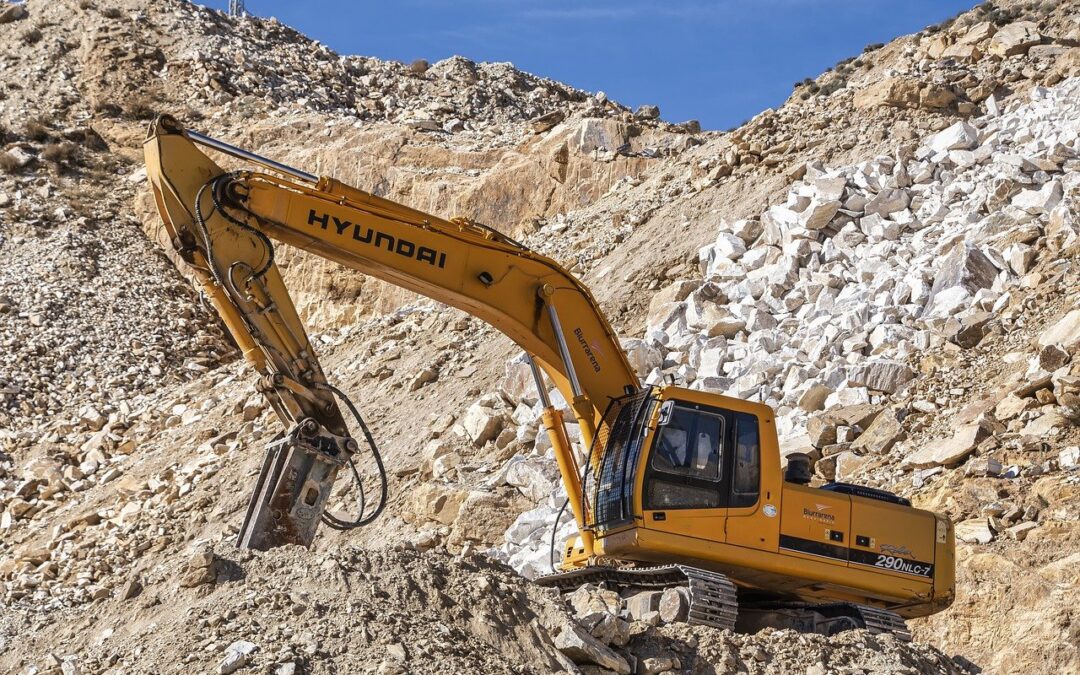Mining plays a vital role in powering industries around the world, but it doesn’t come without its downsides. Surface mining, which involves removing the overlying soil and rock to access minerals closer to the surface, has numerous disadvantages. While it is often more efficient and cost-effective compared to underground mining, the disadvantages associated with surface mining can have significant environmental and social impacts. This article will examine some of the common risks and downsides linked to surface mining operations.
What are the Risks Associated with Surface Mining?
Land Degradation
Land degradation is a direct consequence of surface mining operations. As mining companies remove the overburden, they strip away the top layers of soil, which may have taken thousands of years to develop. This not only affects the natural land cover but also reduces the land’s fertility and ability to support vegetation. The process of land degradation makes it nearly impossible to return the land to its pre-mining condition.
Areas affected by land degradation due to surface mining are often left barren and prone to erosion, with limited chances of restoration without significant intervention. This degradation can have knock-on effects, such as reducing the agricultural potential of nearby areas or harming local wildlife habitats.
Environmental Impact of Surface Mining
One of the most notable risks associated with surface mining is the disruption it causes to the natural environment. Surface mining removes large amounts of earth, leading to erosion and sedimentation, which can disrupt the balance of local ecosystems. When surface mining disrupts the soil, it also affects the flow and quality of water systems, potentially leading to water contamination. The release of chemicals, heavy metals, and other pollutants into the soil can further degrade the environment, affecting plants, animals, and even human communities living nearby.
The large-scale excavation processes used in surface mining also lead to changes in the landscape, which may cause long-term environmental damage. Without proper remediation, these mined areas can take decades or longer to recover from the disturbances.
The environmental impact of surface mining is one of the most debated aspects of this mining method. Deforestation often occurs as trees and vegetation are cleared to make way for mining sites. This loss of forests can lead to erosion, as the absence of tree roots makes the soil more vulnerable to being washed away by rain. Additionally, the mining process frequently results in the contamination and alteration of soil profiles, making it harder for the area to recover post-mining.
Water Pollution
One of the most critical disadvantages of surface mining is its contribution to water pollution. Mining operations often lead to the contamination of nearby water bodies, as runoff from mining activities carries heavy metals, chemicals, and sediment into rivers and lakes. These pollutants can have devastating effects on aquatic life, making the water unsafe for drinking, irrigation, and other uses.
In addition to chemical pollutants, surface mining can increase the sediment load in nearby water bodies. This excess sediment can reduce water quality, disrupt aquatic ecosystems, and block the sunlight needed for underwater plants to thrive. In some cases, the sediment may also clog water intake systems, affecting both industrial and municipal water supplies.
Air Quality Issues
Mining operations, especially those involving surface mining, can significantly impact air quality. The removal of large amounts of earth and rock generates dust, which can be carried by the wind and cause respiratory issues for workers and nearby residents. Additionally, mining equipment and vehicles emit greenhouse gasses, contributing to air pollution.
Efforts to mitigate air quality issues in surface mining include dust control measures, such as the use of water sprays and windbreaks, as well as the implementation of cleaner technologies and fuel-efficient machinery.
Resource Depletion with Surface Mines
One of the less discussed disadvantages of surface mining is the depletion of non-renewable resources. Surface mining tends to extract resources at a faster rate than underground mining, which can lead to the rapid depletion of mineral deposits. Once these resources are exhausted, it can take thousands or even millions of years for them to be replenished naturally.
The rate of resource depletion caused by surface mining poses a long-term challenge for industries that rely on these materials. Without sustainable practices and careful resource management, surface mining can lead to the exhaustion of valuable resources, creating future economic and environmental problems.
Visual Impact of Mining on Surrounding Landscape
The visual impact of surface mining is often one of the most apparent disadvantages. The open pits, rock piles, and tailings left behind by surface mining can significantly alter the landscape, creating an eyesore for nearby communities and tourists. These changes to the landscape are often long-lasting, and without adequate reclamation efforts, they may become permanent scars on the land.
In addition to aesthetic concerns, the disruption of natural landscapes can also negatively affect local wildlife, leading to habitat loss and changes in migration patterns.
Are There Benefits to Surface Mining?
Despite the many disadvantages associated with surface mining, it’s important to note that there are also benefits to surface mining. Generally, it is more cost-effective than underground mining, making it a more attractive option for companies looking to reduce operational expenses. Additionally, surface mining tends to recover more of the mineral deposit, making it a more efficient extraction method.
Mining companies have also made strides in reducing the environmental impact of surface mining through reclamation efforts and stricter regulations.
What is Being Done to Protect Miners from Risk While Working on Surface Mines?
While surface mining poses serious threat to the physical safety of miners on the job site, efforts are being made to protect the health and safety of the miners who work in these environments. Regulatory bodies such as the Mine Safety and Health Administration (MSHA) enforce strict safety protocols to reduce the risks faced by surface miners. These protocols include the use of personal protective equipment (PPE), regular safety training, and guidelines for operating machinery and handling hazardous materials.
Mining companies are also required to conduct risk assessments and implement measures to reduce the exposure of miners to dangerous conditions. Ongoing improvements in mining technology and automation are further reducing the risks faced by miners on-site.

Are the Disadvantages of Surface Mining Worth It?
The disadvantages of surface mining are significant, but mining is the backbone of our economy. Without it, many industries would come to a screeching halt. Surface mining plays a crucial role in meeting the world’s demand for natural resources. So although there are disadvantages, it’s essential to weigh these benefits against the wide list of advantages to surface mining.
Surface mining has undeniable disadvantages, from environmental degradation and water pollution to resource depletion and air quality issues. Despite these challenges, surface mining remains a vital part of the global economy, providing essential materials for industries worldwide. As the mining industry continues to evolve, balancing the need for resources with the protection of the environment and human health will be critical in determining the future of surface mining.

